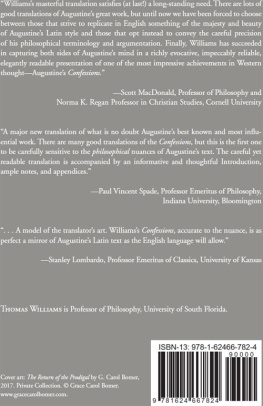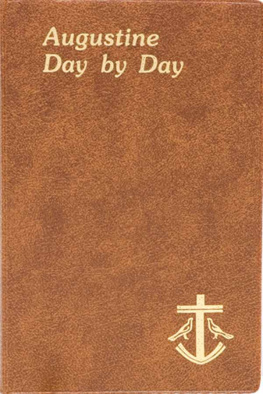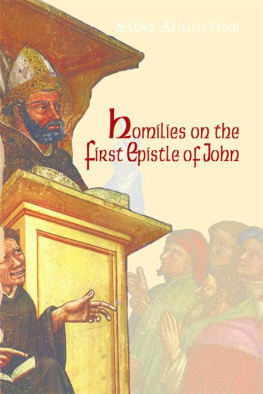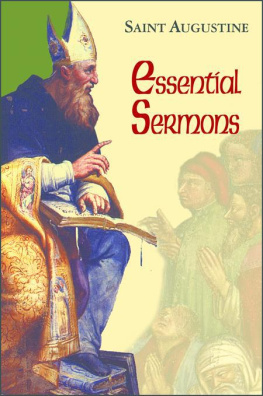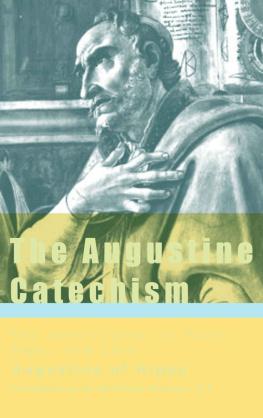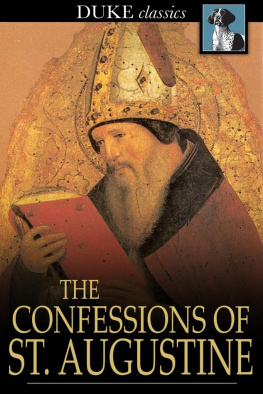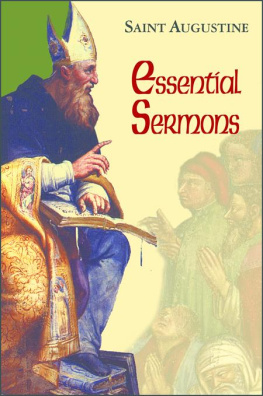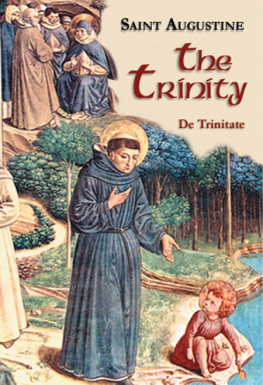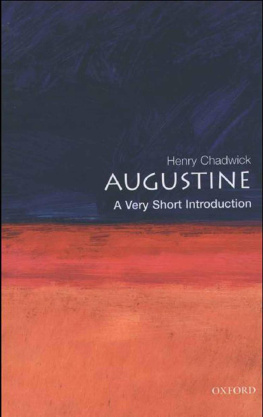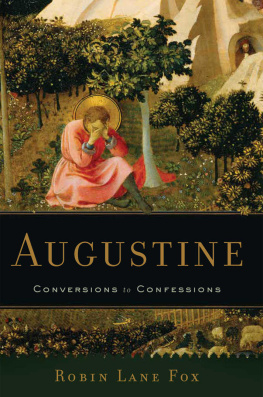Augustine - Collected Works of Augustine
Here you can read online Augustine - Collected Works of Augustine full text of the book (entire story) in english for free. Download pdf and epub, get meaning, cover and reviews about this ebook. year: 2016, publisher: Delphi Classics, genre: Science. Description of the work, (preface) as well as reviews are available. Best literature library LitArk.com created for fans of good reading and offers a wide selection of genres:
Romance novel
Science fiction
Adventure
Detective
Science
History
Home and family
Prose
Art
Politics
Computer
Non-fiction
Religion
Business
Children
Humor
Choose a favorite category and find really read worthwhile books. Enjoy immersion in the world of imagination, feel the emotions of the characters or learn something new for yourself, make an fascinating discovery.
Collected Works of Augustine: summary, description and annotation
We offer to read an annotation, description, summary or preface (depends on what the author of the book "Collected Works of Augustine" wrote himself). If you haven't found the necessary information about the book — write in the comments, we will try to find it.
Collected Works of Augustine — read online for free the complete book (whole text) full work
Below is the text of the book, divided by pages. System saving the place of the last page read, allows you to conveniently read the book "Collected Works of Augustine" online for free, without having to search again every time where you left off. Put a bookmark, and you can go to the page where you finished reading at any time.
Font size:
Interval:
Bookmark:
The Collected Works of
ST. AUGUSTINE
(AD 354-430)

Contents

Delphi Classics 2016
Version 1

The Collected Works of
AUGUSTINE OF HIPPO

By Delphi Classics, 2016
Collected Works of Augustine
First published in the United Kingdom in 2016 by Delphi Classics.
Delphi Classics, 2016.
All rights reserved. No part of this publication may be reproduced, stored in a retrieval system, or transmitted, in any form or by any means, without the prior permission in writing of the publisher, nor be otherwise circulated in any form other than that in which it is published.
ISBN: 978 1 78656 376 7
Delphi Classics
is an imprint of
Delphi Publishing Ltd
Hastings, East Sussex
United Kingdom
Contact: sales@delphiclassics.com
www.delphiclassics.com

Souk Ahras, a municipality in Algeria Augustine was born in AD 354 in the municipium of Thagaste (now Souk Ahras) in Roman Africa. His mother, Monica, was a devout Christian; his father Patricius was a pagan, who converted to Christianity on his deathbed.

Translated by Rev. Professor J. F. Shaw
De doctrina christiana consists of four books that concern how to interpret and teach the Scriptures. The first three of these books were published in AD 397 and the fourth added in 426. The text sets forth three tasks for Christian teachers and preachers: to discover the truth in the contents of the Scriptures, to teach the truth from the Scriptures and to defend scriptural truth when it was attacked.
The Prologue consists of a response to those that would resist Augustines project of providing rules for interpretation of the Scriptures. He outlines three possible objections, including those who do not understand his precepts, those who fail to make effective use of his teachings and those that believe they are already prepared to interpret the Scriptures. To the first two types of critics, Augustine states that he cannot be held responsible for their inability to understand. He then addresses the third type of critic, those who believe they are already able to interpret the Scriptures. If their claims are true, he acknowledges that they have received a great blessing. However, they must admit that language itself was learned from a human being, not directly from God. Therefore, God has created human beings to learn from one another and we ought to learn with humility. All good teaching from human beings derives ultimately from God. The ability to understand obscurity is therefore both the gift of God and reinforced by human teaching.
Book One discusses enjoyment, use, interpretation and the relation of various Christian doctrines to these concepts. Augustine begins with a discussion of the steps in the interpretive process: discovery of what is to be understood, and a way of teaching what has been discovered. He then expands upon the Platonic notion that there are things and signs. Signs are used to symbolise things, but are considered things themselves because they too represent meaning. They are given meaning through their repetition and propagation throughout society.
The fourth book of De Doctrina Christiana has sparked a great deal of debate among scholars with regards to the extent to which Augustines work has been influenced by the rules and traditions of classical rhetoric, and more specifically by the writings of Cicero. In the final chapter, Augustine uses much of Ciceros rhetorical theory as he lays down the foundation for the proper use of rhetoric by Christian teachers.

The earliest known portrait of Augustine in a sixth century fresco, Lateran, Rome

Saint Augustine Taken to School by Saint Monica by Niccol di Pietro, 1413-15
By the Editor.
The four books of St. Augustin On Christian Doctrine (De Doctrina Christiana, iv libri) are a compend of exegetical theology to guide the reader in the understanding and interpretation of the Sacred Scriptures, according to the analogy of faith. The first three books were written ad 397; the fourth was added 426.
He speaks of it in his Retractations, Bk. ii., cha, as follows:
Finding that the books on Christian Doctrine were not finished, I thought it better to complete them before passing on to the revision of others. Accordingly, I completed the third book, which had been written as far as the place where a quotation is made from the Gospel about the woman who took leaven and hid it in three measures of meal till the whole was leavened. I added also the last book, and finished the whole work in four books [in the year 426]: the first three affording aids to the interpretation of Scripture, the last giving directions as to the mode of making known our interpretation. In the second book, I made a mistake as to the authorship of the book commonly called the Wisdom of Solomon. For I have since learnt that it is not a well-established fact, as I said it was, that Jesus the son of Sirach, who wrote the book of Ecclesiasticus, wrote this book also: on the contrary, I have ascertained that it is altogether more probable that he was not the author of this book. Again, when I said, The authority of the Old Testament is contained within the limits of these forty-four books, I used the phrase Old Testament in accordance with ecclesiastical usage. But the apostle seems to restrict the application of the name Old Testament to the law which was given on Mount Sinai. And in what I said as to St. Ambrose having, by his knowledge of chronology, solved a great difficulty, when he showed that Plato and Jeremiah were contemporaries, my memory betrayed me. What that great bishop really did say upon this subject may be seen in the book which he wrote, On Sacraments or Philosophy.
1. There are certain rules for the interpretation of Scripture which I think might with great advantage be taught to earnest students of the word, that they may profit not only from reading the works of others who have laid open the secrets of the sacred writings, but also from themselves opening such secrets to others. These rules I propose to teach to those who are able and willing to learn, if God our Lord do not withhold from me, while I write, the thoughts He is wont to vouchsafe to me in my meditations on this subject. But before I enter upon this undertaking, I think it well to meet the objections of those who are likely to take exception to the work, or who would do so, did I not conciliate them beforehand. And if, after all, men should still be found to make objections, yet at least they will not prevail with others (over whom they might have influence, did they not find them forearmed against their assaults), to turn them back from a useful study to the dull sloth of ignorance.
Next pageFont size:
Interval:
Bookmark:
Similar books «Collected Works of Augustine»
Look at similar books to Collected Works of Augustine. We have selected literature similar in name and meaning in the hope of providing readers with more options to find new, interesting, not yet read works.
Discussion, reviews of the book Collected Works of Augustine and just readers' own opinions. Leave your comments, write what you think about the work, its meaning or the main characters. Specify what exactly you liked and what you didn't like, and why you think so.


